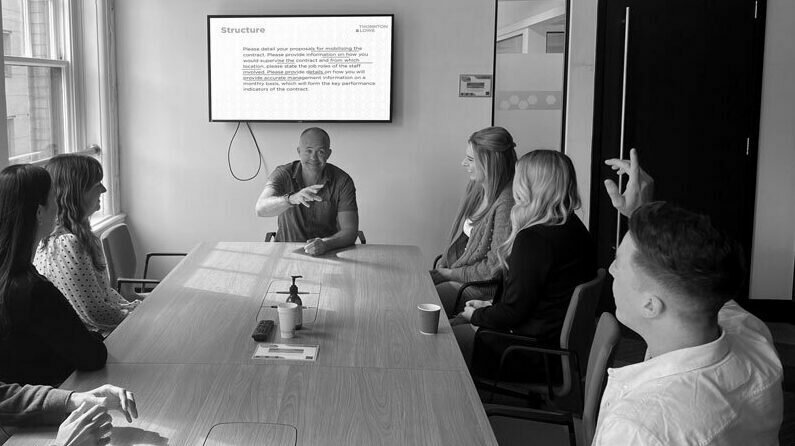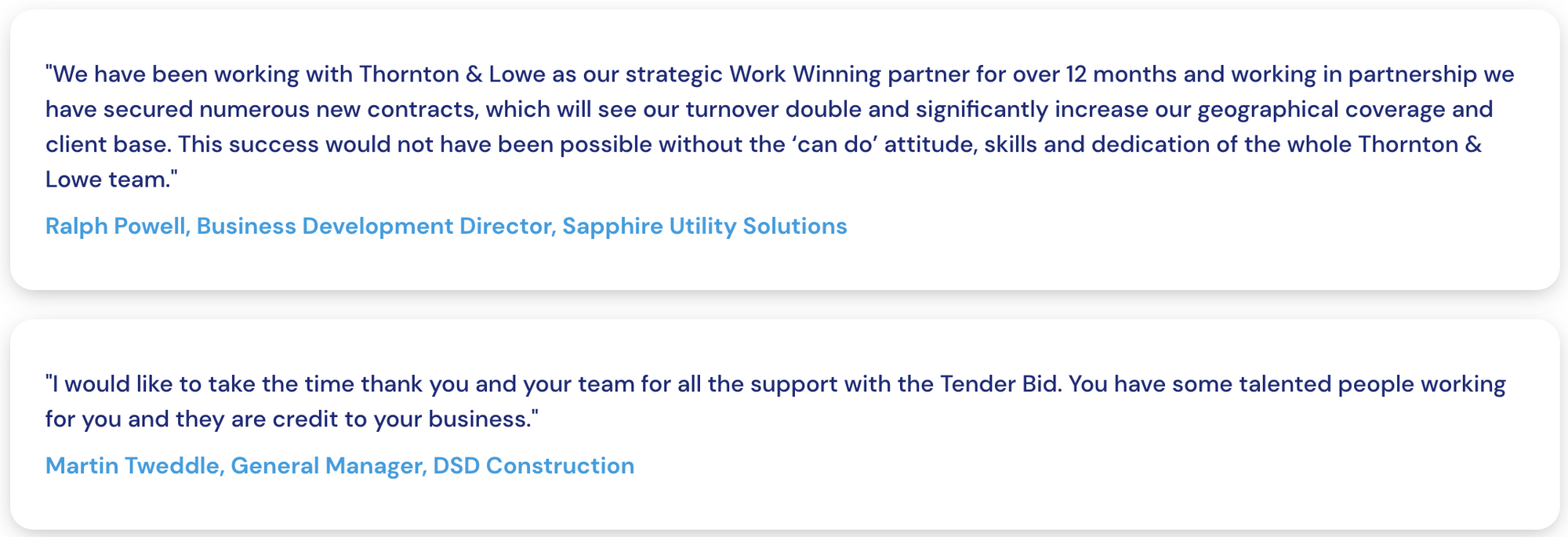Method statements: most common quality questions
When bidding for public sector contracts, SMEs are frequently asked to respond to quality questions in the form of method statements. These questions are designed to assess how you plan to deliver the service, manage risks, and ensure quality and compliance. In this guide, we break down the most common method statement questions and show you how to respond effectively.
"It has to be real. Highly specific and practical operational steps which clearly understand the risks are what win tenders - generic but shiny will not cut it."
- Dave Thornton, Managing Director, Thornton & Lowe
What is a method statement in a tender?
A method statement is more than just a technical description of your processes. In tendering, it acts as a strategic narrative explaining exactly how you intend to deliver the contract. It covers operational details, resource allocation, risk management, and more. For a detailed breakdown, see our guide to writing method statements.

Common method statement categories in tenders
Method statement requirements vary by contract, but most fall into predictable themes. Here’s a summary table outlining key areas and what’s usually expected:
Category | What it Covers | Typical Evaluation Focus |
|---|---|---|
ICT Systems | Data access, integration, reporting and system benefits | Security, accessibility, data visibility |
Infrastructure | Site setup, equipment storage, H&S facilities, vehicle management | Operational readiness, compliance, investment |
Asset Management | Procurement and supply chain processes | Cost control, risk, sustainability |
Operational Delivery | Day-to-day task delivery, missed collections, assisted service management | Reliability, contingency planning |
Customer Care & Data | Complaint handling, GDPR compliance, recruitment and training | Data security, service responsiveness |
Monitoring & Supervision | Supervision structure, use of ICT for oversight, business continuity | Resilience, scalability, visibility |
Health & Safety | Policy implementation, team responsibilities, equipment safety | Legal compliance, risk management |
Mobilisation | Timelines, TUPE handling, early-stage resourcing | Readiness, smooth transition |
Innovation & Added Value | Service improvement, recycling initiatives, third-sector partnerships | Creativity, alignment with authority goals |
Corporate Management | Strategic fit, quality control, understanding of authority's broader aims | Governance, quality, community outcomes |
Social Value | Local employment, sustainability, community benefits | Measurable impact, relevance to Social Value Act |
Need a quote for your method statements?
Contact us today
Writing strong responses: best practices
1. Structure answers using the question format
Always mirror the structure of the question in your response. If a question has multiple bullet points or areas to cover, use those as headings or subheadings in your answer.
2. Use plain English and avoid jargon
Your answers will be scored by a panel of evaluators, not just technical experts. Keep language clear and avoid unnecessary complexity.
3. Be specific and evidence-based
Don’t just say you have experience. Prove it. Use data, previous project outcomes, named accreditations and client testimonials.
4. Include visual structure
Use numbered steps, subheadings, and where appropriate, method statement templates to present your answers clearly.

Sample method statement breakdown
Here’s how to approach a typical operations method statement:
Question:
"Describe your proposed methodology for delivering refuse, recycling and clinical waste collection services. Include how you will manage missed collections, assisted pickups and seasonal variations."
Strong response structure:
- Overview: Briefly summarise your approach to refuse and recycling services.
- Daily operations: Detail vehicle routing, crew shifts, loading/unloading procedures.
- Assisted collections: Describe how these are flagged, recorded, and monitored.
- Missed collections: Include escalation process, resolution times, communication methods.
- Seasonal demand: Show how you plan for garden waste surges, holidays, etc.
- KPIs and monitoring: Describe how performance is tracked and reported to the Authority.
- Evidence: Cite similar contracts delivered, including uptime metrics and resident satisfaction scores.
Addressing health & safety and compliance
Health and safety questions are common. Make sure to:
- Reference your H&S policy and who oversees it.
- Detail training procedures, risk assessments, and equipment checks.
- Include how you report incidents, respond to audits, and review performance.
Addressing social value requirements
Social value is now a standard part of most tenders. You may be asked:
- How will you support the local economy?
- What steps will you take to reduce environmental impact?
- How will you promote equality, diversity and inclusion?
Answer by:
- Including quantifiable commitments (e.g. number of apprenticeships).
- Referencing partnerships with local groups or charities.
- Linking your offer directly to the authority's stated social value priorities.
Example: "We commit to creating 2 apprenticeship opportunities and will partner with a local employment charity to promote these roles."
Use templates wisely
Templates can help you draft and structure your answers efficiently. But avoid the trap of reusing generic content. Always tailor each method statement to the buyer’s requirements.
Explore our bid templates for examples across industries.

Frequently asked questions
What makes a method statement high scoring?
Clarity, compliance with the question, relevant examples, and evidence. Avoid vague language and always structure your answers in a logical way.
How long should a method statement be?
Follow any stated word limits. If none are provided, aim for clarity over quantity. Around 500–800 words per question is a good benchmark.
Can I use the same method statement for multiple tenders?
Only with significant customisation. Buyers expect bespoke responses that reflect their specific needs and terminology.
What’s the difference between a method statement and a SOP?
A SOP (Standard Operating Procedure) is internal and static. A method statement is external and tailored to a specific project or contract.
Bid writing training to improve your method statements and quality responses?
Click hereNeed support with your tender?
Thornton & Lowe can help. We’ve supported hundreds of successful bids with a win rate of over 75%. Whether it’s full bid management or just support with your method statements, contact us today on 01204 238 046 or email hello@thorntonandlowe.com.
We also offer:
For a complete guide to quality-related tender questions and how to answer them, see our article on Tender Questions and Answers.






